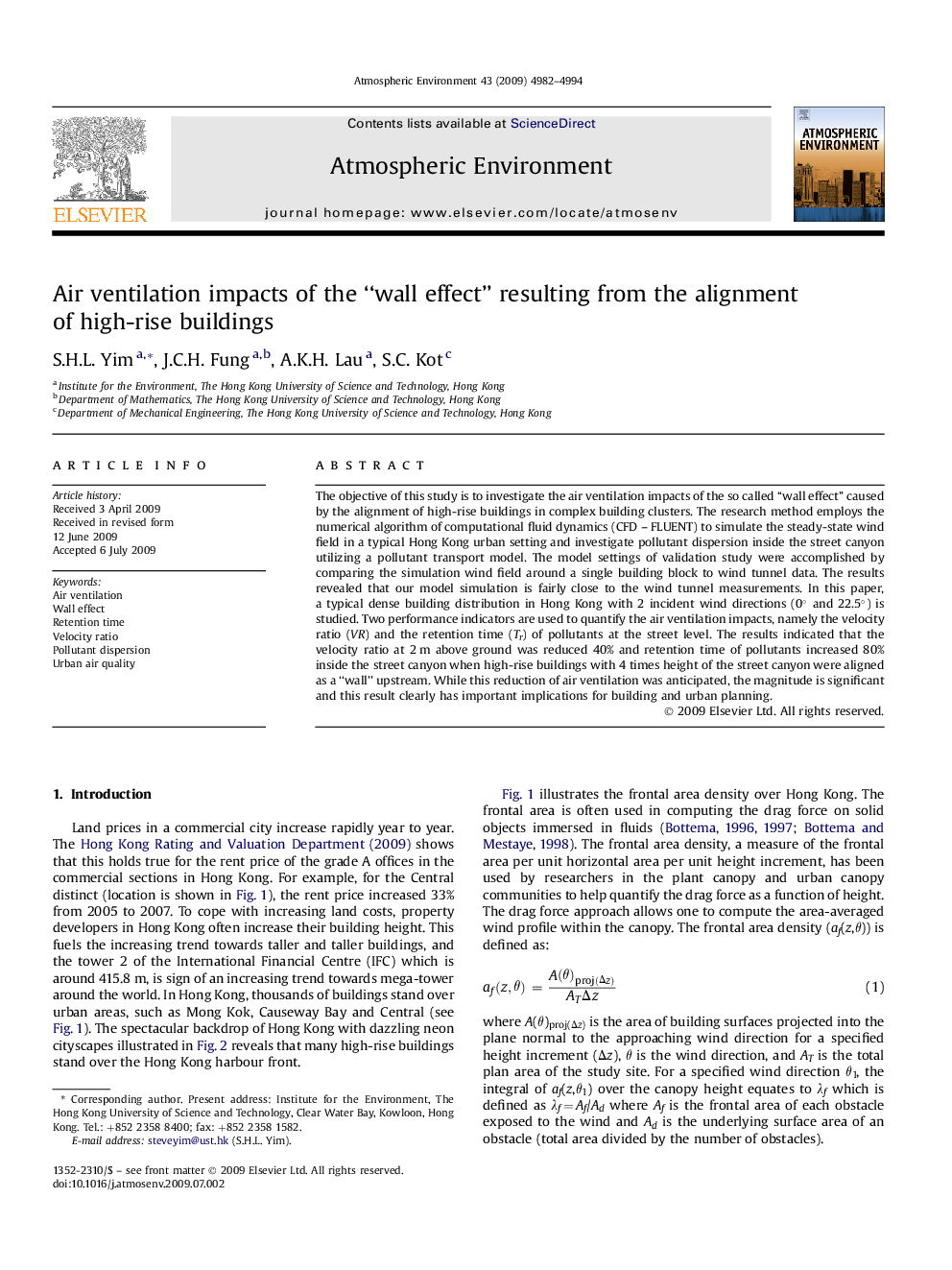| Article ID | Journal | Published Year | Pages | File Type |
|---|---|---|---|---|
| 4441308 | Atmospheric Environment | 2009 | 13 Pages |
The objective of this study is to investigate the air ventilation impacts of the so called “wall effect” caused by the alignment of high-rise buildings in complex building clusters. The research method employs the numerical algorithm of computational fluid dynamics (CFD – FLUENT) to simulate the steady-state wind field in a typical Hong Kong urban setting and investigate pollutant dispersion inside the street canyon utilizing a pollutant transport model. The model settings of validation study were accomplished by comparing the simulation wind field around a single building block to wind tunnel data. The results revealed that our model simulation is fairly close to the wind tunnel measurements. In this paper, a typical dense building distribution in Hong Kong with 2 incident wind directions (0° and 22.5°) is studied. Two performance indicators are used to quantify the air ventilation impacts, namely the velocity ratio (VR) and the retention time (Tr) of pollutants at the street level. The results indicated that the velocity ratio at 2 m above ground was reduced 40% and retention time of pollutants increased 80% inside the street canyon when high-rise buildings with 4 times height of the street canyon were aligned as a “wall” upstream. While this reduction of air ventilation was anticipated, the magnitude is significant and this result clearly has important implications for building and urban planning.
